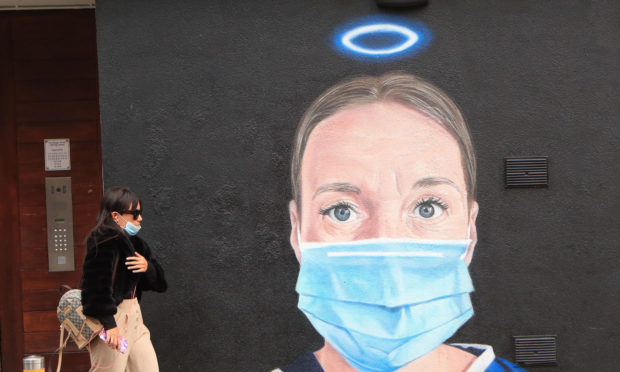The Covid divide in England is politically seismic. The north-west has six times the Covid infection rate of the south-east.
Looking for explanation, you fall on cliché – the uneven rate is explained by sweaty northerners toiling in factories while southerners work in offices. But England’s manufacturing hot spot is the Midlands. Manual labour can’t be the answer.
Then there is the assumption of poor housing, but UK Government data shows the south-east has just as much bad housing. Maybe it’s immigrant communities – if that’s the explanation, Birmingham has the highest BAME population in England.
Obesity might be a factor, but the most obese English county is rural Shropshire, according to the latest data. Maybe it is because there is more residential housing in the city centres – but that would affect Bristol too.
The only clear difference is in poverty – the House of Commons Library compares poverty levels between 2015 and 2019, noting a clear trend of things getting worse in the north, better in the south.
The Covid difference may rest on the oldest cliché of all, that it’s “poor up north”.
Labour would have devolved power to northern assemblies 20 years ago, had the voters chosen to. The Tories leapt on the idea 10 years ago with George Osborne’s Northern Powerhouse rhetoric. Boris Johnson has continued this with his “levelling up” agenda. These big ideas show a shift from thinking: that the north is different, to one that the north is worse off than the south.
Tories have used northern identity, and dissatisfaction with conventional politics, to good effect. The north voted for Brexit and, famously, for Boris. The red wall collapsed in last year’s election. But in acknowledging this difference, they have started something they may come to regret.
Johnson’s demise may come from the north. In the short term, he faces new MPs and voters who thought he’d make a difference but find themselves angry at London diktat and confusing rules. His majority of 80 in the Commons, won only 10 months ago, is turning into a liability when old red wall constituencies begin to rebel at his incompetence.
This in turn presents a mid-term problem. Anger at lockdown and London rules may finally give the north the issue it needs to build an effective political identity. Labour’s devolution plans and the levelling up agenda both lacked urgency because northern English people didn’t feel the same common bond as Scots do, for example. An identity grudge needs a policy grudge to get motivated, and the north has that now.
Which presents Johnson, and the UK, with a huge long-term problem. Should northerners, spurred on by anger over Covid rules, get organised and start digging into the truth of why the virus has hit them worse, they may hit the bedrock of British governance, exposing a nation almost geologically biased to the south.
For example, Johnson wants to build more houses. To this end, he wants to change planning laws. This is pitched as part of levelling up. Yet the algorithm being used to determine which places need more houses has a wealth bias.
It identifies places where property is expensive and concludes that high value equals short supply. Housing generally costs more in the south, so it needs more new-builds than the north.
But northern political leaders speculate that high Covid rates may be linked to greater density of housing, both in the number of people in the average house, and the proximity of households. Note, official statistics don’t support the view of cramped housing, and the loss of social housing is as bad in the south as the north.
Paradoxically, it may be that where housing is relatively cheap, more houses are needed, for health and happiness reasons. Housing may not be about individual success, an old Tory idea, but an antidote to poverty, a Labour Party idea.
Should a righteous anger propel political momentum, the Tories face the prospect of losing the northern vote as they have lost the Scottish one.
Levelling up must be serious, to address voter anger. That would mean Johnson addressing poverty, a topic he’s shown no interest in and is ideologically resistant to. Alternatively, Labour’s case for federal power being devolved to Manchester becomes irresistible.
Don’t forget the UK Government is also pressing on with the insanely expensive high-speed rail line. This is justified by the unchallenged thinking that what the north needs is to be slightly better connected to the south.
A proper northern identity and energy might take a different view, that what the north-west needs is the kind of spending London expects. And that poverty, not rail infrastructure or identity, is the core issue. If HS2’s £80 billion budget was spent on homes, England might be “levelled up” in a generation.
If the causes of an uneven rate of Covid infectiousness are the same as all social injustice, poverty, then it could yet undo Johnson. It may even destroy the base assumptions of how to govern England.











